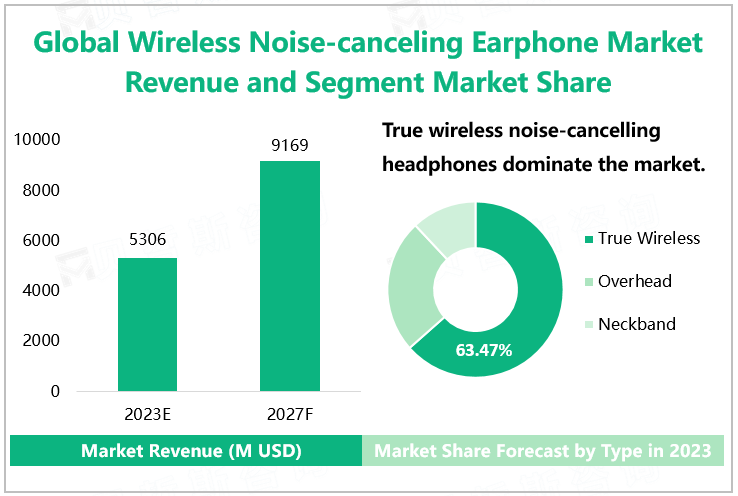Wireless noise-canceling headphones refer to earphones that have wireless connectivity and can reduce external noise. It adopts a special technology that can reduce external noise through electronic devices or mechanical structures, allowing users to experience better listening effects.
At present, there are two main ways for headphones to achieve noise reduction: passive noise reduction and active noise reduction. Passive noise reduction, also known as physical noise reduction, only achieves the goal of noise reduction by creating a relatively enclosed space close to the ears through the inherent isolation of the earphone shape and in-ear style. That is to say, the earphones themselves do not participate in noise reduction through technical means, but use their external materials and internal filling to block sound from entering the ear canal, such as by wearing large earmuffs; Active noise reduction, in contrast to passive methods, refers to the use of technical means to reversely eliminate the collected noise sound waves to attain the effect of canceling out noise and achieving quiet listening.
According to our research data, the global wireless noise-canceling headphone market revenue is expected to reach $5306 million in 2023. In the coming years, the continuous popularity of smartphones, tablets, laptops, portable music players, and other mobile devices will greatly drive the growth of the wireless noise-canceling headphone market. It is estimated that the global wireless noise-canceling headphone market will have a total revenue of $9169 million by 2027.
Global Wireless Noise-canceling Earphone Market Revenue and Segment Market Share
Source: www.globalmarketmonitor.com
From the perspective of segmented markets, wireless noise-canceling headphones can usually be divided into three categories based on their wearing methods: true wireless noise-canceling earphones, overhead noise-canceling earphones, and neckband noise-canceling earphones. Among them, the true wireless noise-canceling earphone segment market dominates, with an estimated market revenue of $3368 million in 2023 and an expected market share of 63.47%.
In terms of the competitive landscape, the global wireless noise-canceling headphone market is highly concentrated. Data shows that in 2020, the total market share of wireless noise-canceling headphones for the top 3 enterprises in the industry was 41.12%, while the total market share for the top 6 enterprises was 54.28%. The top three companies in the rankings were Apple, Samsung, and Bose, with market revenue shares of 23.45%, 9.82%, and 7.86% in 2020, respectively.
Market Revenue and Share of Major Enterprises in 2020
|
Enterprises
|
Market Revenue(M USD)
|
Market Share
|
|
Apple
|
1244
|
23.45%
|
|
Samsung
|
521
|
9.82%
|
|
Bose
|
417
|
7.86%
|
|
Top3
|
2182
|
41.12%
|
|
Top6
|
2880
|
54.28%
|
Source: www.globalmarketmonitor.com
